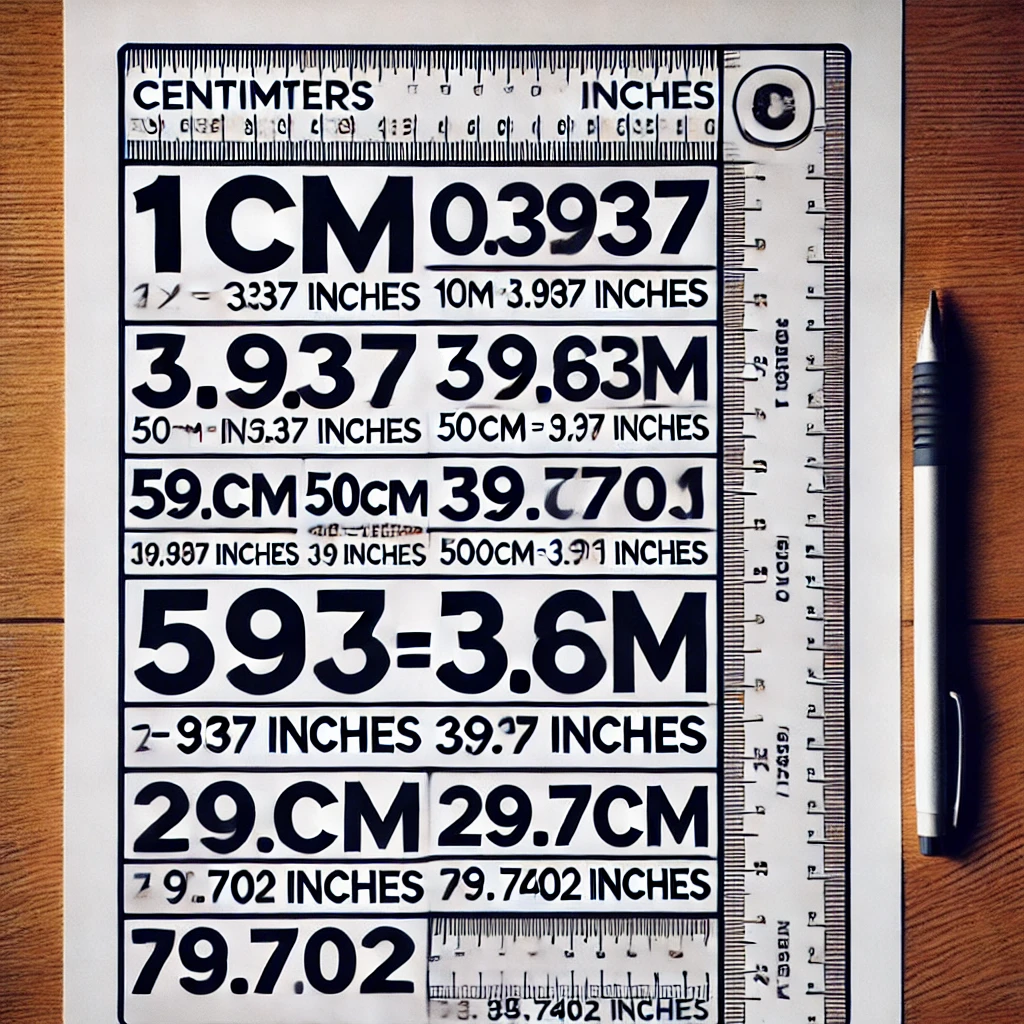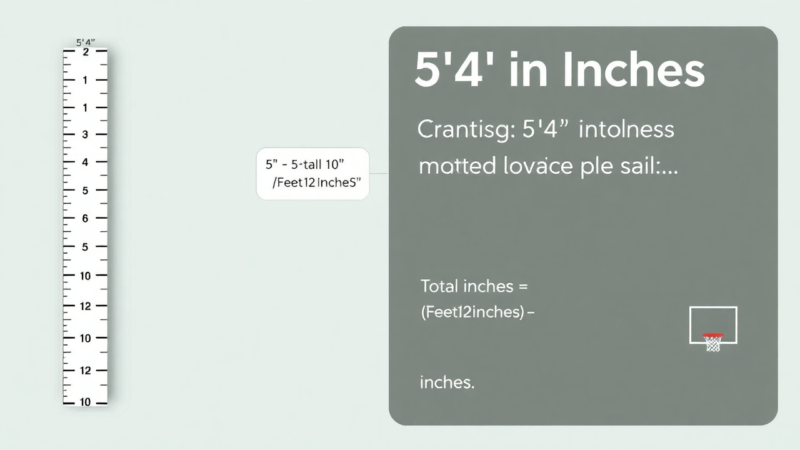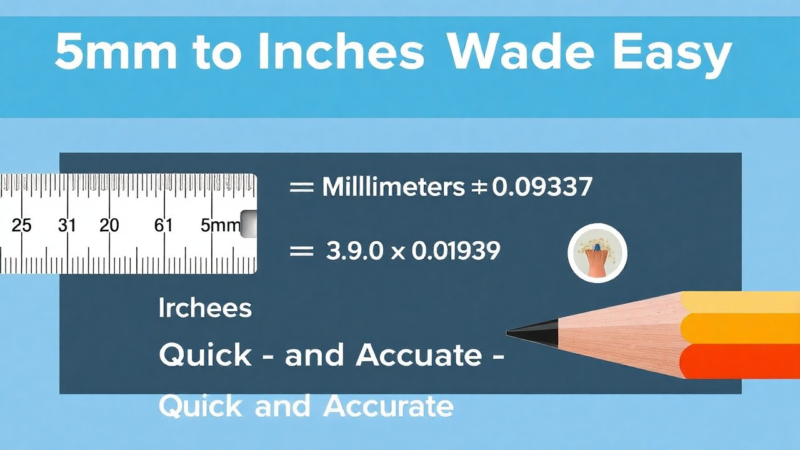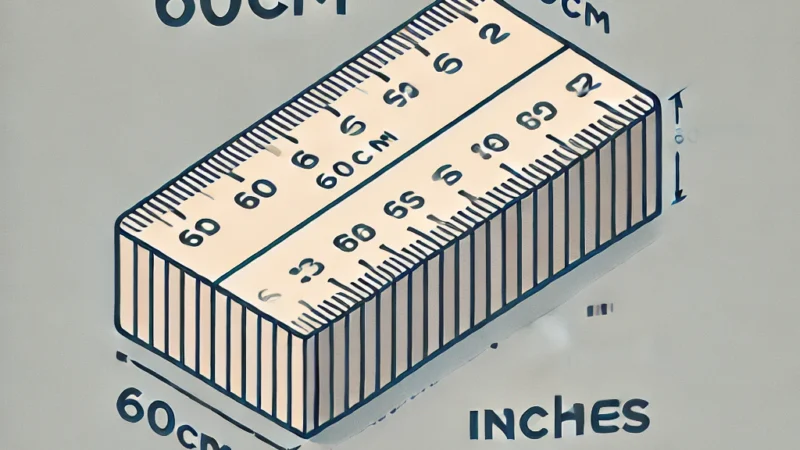Convert MM to Inches – The Ultimate Guide

Understanding Millimeters and Inches
Millimeters (mm) and inches (in) are standard units of length used in different measurement systems. The millimeter belongs to the metric system, commonly used in science, engineering, and manufacturing. The inch, on the other hand, is part of the imperial and US customary measurement systems, mainly used in the United States, Canada, and the United Kingdom.
How Many Inches in a Millimeter?
The exact conversion is:
To convert millimeters to inches, multiply the number of millimeters by 0.0393701.
Millimeters to Inches Quick Conversion Table
| Millimeters (mm) | Inches (in) |
|---|---|
| 1 mm | 0.0394 in |
| 5 mm | 0.1969 in |
| 10 mm | 0.3937 in |
| 50 mm | 1.9685 in |
| 100 mm | 3.937 in |
| 500 mm | 19.685 in |
| 1000 mm | 39.3701 in |
Step-by-Step Guide: Converting MM to Inches
- Multiply the number of mm by 0.0393701.
- Round off the result to the desired decimal place.
- Verify using a calculator or a conversion table if needed.
- Use an online converter for instant results.
Example Calculation
Convert 150 mm to inches:
Thus, 150 mm is approximately 5.91 inches.
Why Convert MM to Inches?
- Engineering & Manufacturing – Many industries use both metric and imperial units.
- Home Improvement & DIY Projects – Some blueprints use inches, while others use millimeters.
- Medical & Scientific Applications – Instruments often use metric units but require conversion.
- Automobile Industry – Specifications sometimes need conversions between mm and inches.
- Fashion & Textile Industry – Clothing and fabric dimensions may use both units.
Common Objects and Their MM to Inches Conversion
- A credit card’s thickness: 0.76 mm ≈ 0.03 in
- A paperclip: 10 mm ≈ 0.39 in
- A standard pencil diameter: 7 mm ≈ 0.28 in
- A standard smartphone thickness: 8 mm ≈ 0.31 in
- A car key thickness: 2 mm ≈ 0.08 in
- A small screw diameter: 4 mm ≈ 0.16 in
- A standard AA battery height: 50.5 mm ≈ 1.99 in
- A compact disc (CD) thickness: 1.2 mm ≈ 0.047 in
Millimeters and Inches in Different Fields
1. Construction and Carpentry
Builders and carpenters frequently convert measurements between millimeters and inches for materials such as wood, pipes, and screws.
2. Medical and Healthcare Industry
Medical instruments like syringes, scalpels, and braces are measured in millimeters to ensure precision.
3. Science and Research
Millimeters are commonly used to measure microscopic objects, including cell sizes and thin material layers.
4. Technology and Electronics
Electronic components like chips, screen sizes, and circuits often require conversions between mm and inches.
Using Online Conversion Tools
To ensure quick and accurate conversions, you can use:
- Google search (e.g., « convert mm to inches »)
- Mobile conversion apps
- Online unit converters
Manual Approximate Conversion Trick
If you don’t have a calculator or an internet connection, you can estimate:
- Since 1 inch ≈ 25.4 mm, divide the millimeter value by 25.4.
- Example: Convert 300 mm to inches: inches.
Additional Insights on MM to Inches Conversion
Historical Background of the Inch and Millimeter
- The inch was historically defined based on the width of a human thumb, but it later became standardized at 2.54 cm.
- The metric system, which includes millimeters, was established in France during the 18th century as a universal measurement system.
Importance of Precision in Conversion
When converting mm to inches, accuracy is crucial in fields like:
- Aerospace Engineering – Aircraft components require precise measurements.
- Medical Devices – Incorrect conversions can lead to design flaws in medical tools.
- Manufacturing – Small measurement errors can cause significant defects in large-scale production.
Real-World Applications
- International Trade – Many product dimensions are provided in both mm and inches.
- Academic Research – Scientists use both units when publishing papers for a global audience.
- Sports Equipment – Many measurement standards in sports use inches while others use millimeters.
Frequently Asked Questions
1. How do I convert inches to millimeters?
To convert inches to millimeters, multiply the number of inches by 25.4.
2. Is 1 mm less than 1 inch?
Yes, 1 mm is much smaller than 1 inch. 1 inch = 25.4 mm.
3. What is 10 mm in inches?
10 mm is approximately 0.3937 inches.
4. How many inches is 1000 mm?
1000 mm is approximately 39.37 inches, which is a little over 3 feet.
Conclusion
Knowing how to convert mm to inches is crucial in various fields such as engineering, medicine, construction, and daily life. Whether you use the conversion formula, reference tables, or online tools, this guide ensures you have all the information needed for accurate conversions.





